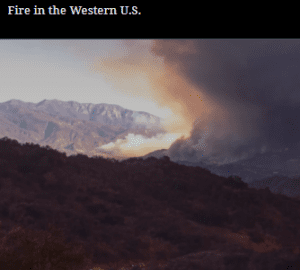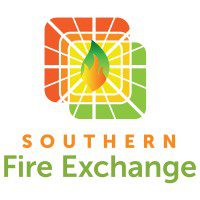Fire Ecology & Effects
View article.
Our study found that fire perimeter source and fireline buffer width had the largest impact on quantified fireline effectiveness metrics. Misclassification of firelines produced dramatic erroneous results which artificially increased the effectiveness and decreased suppression effort. High-severity fires were shown to be less effective across all fireline types and required higher suppression than most low- and moderate-severity fires.
View article.
Although fire is a fundamental ecological process in western North American forests, climate warming and accumulating forest fuels due to fire suppression have led to wildfires that burn at high severity across larger fractions of their footprint than were historically typical. These trends have spiked upwards in recent years and are particularly pronounced in the Sierra Nevada–Southern Cascades ecoregion of California, USA, and neighboring states. We assessed annual area burned (AAB) and percentage of area burned at high and low-to-moderate severity for seven major forest types in this region from 1984 to 2020. We compared values for this period against estimates for the pre-Euro-American settlement (EAS) period prior to 1850 and against a previous study of trends from 1984 to 2009.
View story map.
But over the past few decades, wildfires have worsened by almost every metric. It’s impossible to ignore this new consequence of environmental change. Fires are getting larger, more severe, more destructive and dangerous, and eliminating entire patches of forests, grasslands, and shrublands.
The combination of changing climate, extreme weather, land use, aggressive fire suppression policies, and wildland urban interface expansion have contributed to altered fire behavior regimes. And all of these past and current factors are converging in a big way in the western U.S. Today’s megafires pose an increasing threat to human health, infrastructure, natural resources, and ecosystem resilience.
View article.
We demonstrate that fire had differing effects on morphogroups of biocrusts, as crustose lichens were observed to be free of char. Mosses demonstrated char, suggesting that they may have experienced a reduction in cover, but they were not lost from the site, following fire. This finding could benefit studies on the restoration of biocrusts, because biocrusts may not need to be reintroduced to a site following fire. Studies related to the physiology of morphogroups and their susceptibility to fire would add to our understanding of this phenomena.
Webinar recordings of the Forest Service’s Research and Development SCIENCEx FIRE week.
Fire History and Ecology
Introduction to SCIENCEx Fire Week | Jens Stevens
Indigenous Fire Stewardship and Cultural Burning | Frank Lake
Fire Exclusion and Western Forest Change | Eric Knapp
A History of Fire in the Eastern US: How Humans Modified Fire Regimes through the Holocene | Dan Dey
Conference website.
Better wildland fire governance is needed to protect biodiversity, foster carbon sequestration and healthy forests and assure they are providing goods and services that do not vanish in wildfire smoke.
As Chairman and on behalf of the Organizing Committee of the 8th International Wildland Fire Conference we invite you to come to Portugal with your knowledge, insights, and thoughts. We welcome you to contribute with your institutional or professional case study, your scientific work or your operational success or failure in tackling complexity and uncertainty when governing or managing wildfire risk.
At Porto, you will have a lifetime influencing professional experience, through the opportunity to meet with thousands of people coming from all over the world. We all share similar problems and are deeply committed to work on the solutions.
We will be honored to host you at Porto, to discuss and participate in defining Governance principles towards the development an international framework. We believe that your piece of the puzzle will matter to help your nation and all nations to be better prepared to deal with the challenges ahead of us and to build fire-resilient landscape and societies.
TIAGO MARTINS DE OLIVEIRA
Chairman of the AGIF Board of Directors
View article.
Soil temperature extremes are not uncommon when woody fuels are ignited in prescribed burns or wildfires. Whether this leads to substantial loss of soil organic matter or microbial life is unclear. We created a soil heat gradient by burning four levels of masticated woody fuels (0, 34, 101, and 169 Mg ha−1) to determine if heat thresholds produce abrupt changes in soil C, N, microbial biomass, or fungal hyphae. Twenty-four burns were conducted with masticated fuels overlaying a clay loam soil equilibrated at either 4 or 25% volumetric soil water content. Maximum temperatures ranged from 40 to 450 °C depending on fuel load and soil moisture content, with heat duration (>60 °C) as great as 22 h. Moist soil quenched temperatures two- to threefold compared with dry soil at comparable fuel loads. A slight, gradual decline in total C and N was found with increasing temperature and heat duration, reaching a maximum loss of 14–18% of the total at the highest heat load. Available NH4 increased linearly starting at 150–175 °C and reached a maximum 15-fold increase relative to unburned soil by 450 °C. Nitrification (30 d post-fire) was low regardless of treatment and was essentially eliminated at the highest temperatures. Microbial biomass declined curvilinearly with increased heating, approaching 65% loss compared with unburned soil, and was most rapid in moist soil once temperatures exceeded 60–70 °C. Ultimately, we found no evidence of abrupt heat thresholds for these common soil properties. Instead, property changes followed a slightly declining trajectory (soil C, N, NO3, fungal hyphae) or a steady incremental increase (NH4) or decrease (microbial biomass).
Webinar registration.
The good, bad, and ugly of fire and wildlife – roasty toasty critters or promoting sustainable habitat for expanding and healthy wildlife populations? Let’s discuss the pros and cons of fire on wildlife. How is the lack of fire at the necessary scale, frequency, intensity/severity, and seasonality one of the greatest threats to wildlife in fire-dependent ecosystems?
View article.
Smoke characteristics improved predictions of fire severity in non-reburn areas but not in reburns. Maximum daily smoke cover interacted with elevation, showing a strong dampening effect of high smoke cover on fire severity at low elevations consistent with prior work and a weaker amplifying effect on fire severity at middle elevations with low smoke cover.
View article.
A slight, gradual decline in total C and N was found with increasing temperature and heat duration, reaching a maximum loss of 14–18% of the total at the highest heat load. Available NH4 increased linearly starting at 150–175 °C and reached a maximum 15-fold increase relative to unburned soil by 450 °C. Nitrification (30-d post-fire) was low regardless of treatment and was essentially eliminated at the highest temperatures. Microbial biomass declined curvilinearly with increased heating, approaching 65% loss compared to unburned soil, and was most rapid in moist soil once temperatures exceeded 60–70 °C. Ultimately, we found no evidence of abrupt heat thresholds for these common soil properties. Instead, property changes followed a slightly declining trajectory (soil C, N, NO3, fungal hyphae) or a steady incremental increase (NH4) or decrease (microbial biomass).






